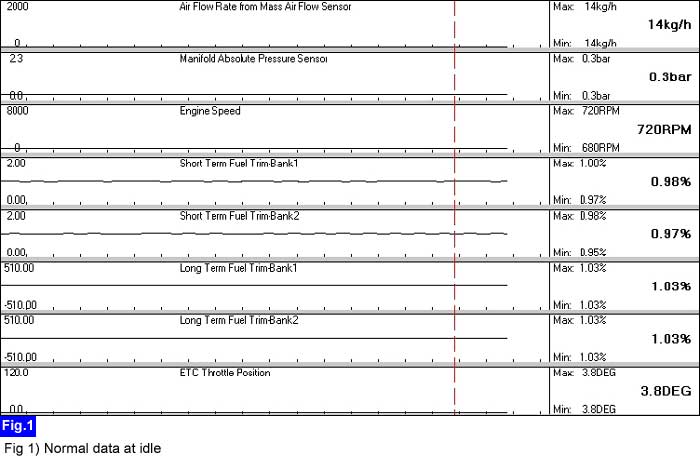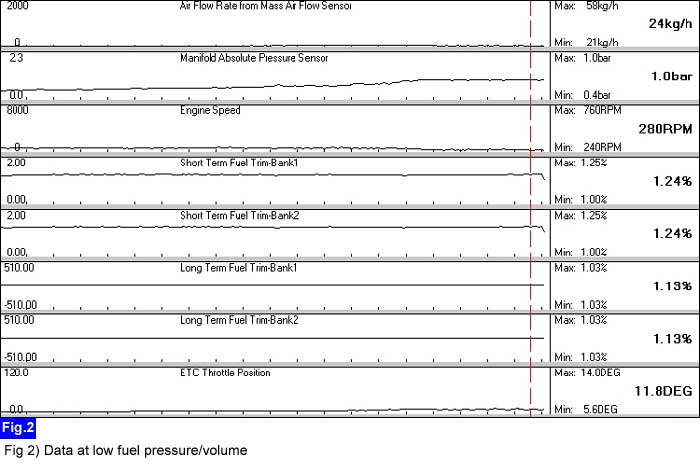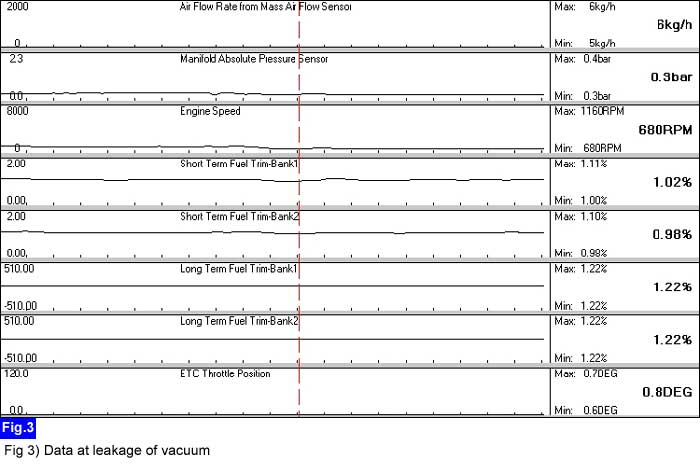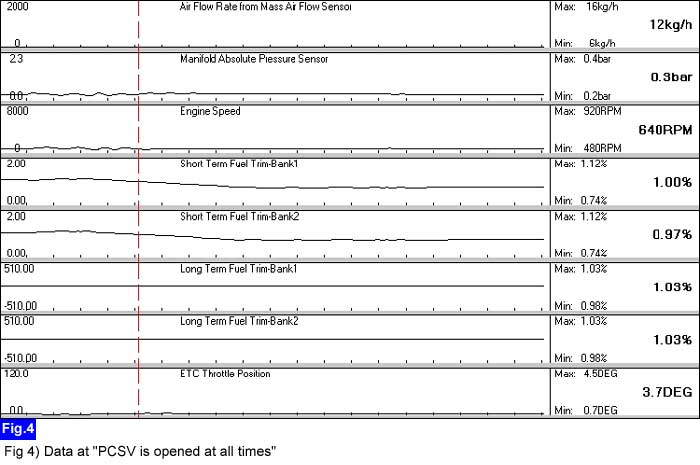Monitor current data after engine warming up.
■ Reference current data


◎ Current data analysis (example)
▶ When Air-fuel ratio is lean due to low fuel pressure, ECM raises short term fuel trim and long term fuel trim for target Air-fuel ratio & RPM.
▶ ECM also open throttle(ETC).
▶ Finally MAFS is increased by increasing intake air.

◎ Current data analysis (example)
▶ When Air-fuel ratio is lean due to leakage of vacuum, ECM raises short term fuel trim and long term fuel trim for target Air-fuel ratio & RPM.
▶ ECM also close ETC because of adding air.
▶ Finally MAF is decreased by decreasing intake air.

◎ Current data analysis (example)
▶ When Air-fuel ratio is rich because PCSV is always opened , ECM higher short term fuel trim and long term fuel trim.
▶ ECM also close ETC because of opened PCSV.
▶ Finally MAF is decreased by decreasing intake air.


☞ From "feed back" state in the initial time of quick acceleration section to "rich" state in stall test section.
☞ Go to "feed back" state quickly at idle after quick acceleration.
☞ If current data is high(rich) and is not "feed back" state, there is problem in the intake/exhaust system.
☞ If current data is low (lean) and is not "feed back" state, there is problem in the fuel pressure.
This current data is nothing but an example at certain condition. Thus, the real current data could be different from this example.
